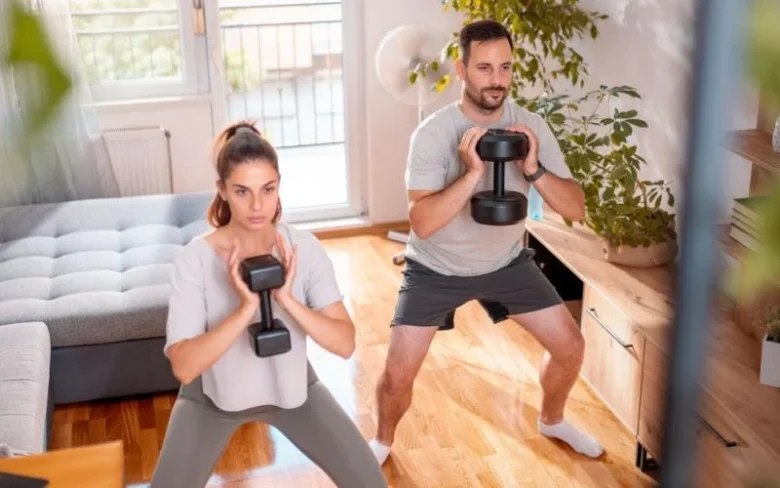The first steps in your fitness journey could seem overwhelming, particularly in the beginning when you’re not used to working out. But implementing an easy-to-follow home workout program is an excellent way to increase your confidence and establish an exercise routine without having to go to the gym. This guide will take you through all you need to know about reaching your fitness goals in the convenience of your home.
Understanding Your Body
Before you begin a workout plan, it’s crucial to know your body’s needs and the capabilities it has. Each person’s fitness level differs; therefore, take time to evaluate your fitness. Are you experiencing joint discomfort? Are there particular areas you’d like to build strength in? Think about the answers to these questions in order to figure out how to adapt your workouts to meet your specific requirements. Fitness isn’t just about physical strength. It’s also about mental preparation. Being aware of your starting point can assist in avoiding injuries and help ensure steady progression.
Essential Equipment
One of the most appealing aspects of working out at home is its ease of use. While you don’t have to spend a lot of money on equipment for your gym, having simple tools can make a huge difference. Yoga mats are great to help cushion your joints during exercise, and resistance bands are a great addition to your workout routines. If you can, think about purchasing lightweight kettlebells or dumbbells to build the strength. Don’t overlook the importance of having a water bottle to stay in good shape throughout your workout! These little investments can significantly help you in your workout at home.
Creating a Workout Space
A messy space could distract you from working out. Make a tidy, small area of your home as your exercise zone. If it’s a corner in your living room or spare room, ensure that it’s clear of obstructions and has enough room for you to move around freely. A tidy, well-organized space is not just a way to reduce distractions but also makes working out more enjoyable. If possible, select an area that has good circulation and also a mirror that can assist you in assessing your posture.
Sample Workout Plan
It’s all about consistency in achieving outcomes. Here’s a basic, beginner-friendly program that you can use 3-4 times a week. Begin with a five- to ten-minute warm-up such as walking in place, jogging, jumping jacks, or dynamic stretching. Then, you can move on to the bodyweight workouts such as push-ups, squats, lunges, and planks. Make sure to perform three sets of 10-12 times each exercise. Then, finish your workout with a cooling workout that incorporates static stretches to increase flexibility and decrease the soreness of muscles. This well-balanced routine targets the most important muscles and helps to build strength.
Nutrition and Hydration
Your efforts to exercise won’t be worth much if you don’t have the right nutrition. A balanced diet that is rich in lean protein along with whole grains, healthy fats, and fresh vegetables is vital to fuel your body and help you recover. Also important is keeping hydrated. Lack of water can cause muscle cramps and fatigue, which can affect your performance. Make sure you drink plenty of water throughout the day. Also, take a bite of a snack prior to your workout, like a banana or a handful of nuts, to boost your energy levels.
Tracking Progress
Monitoring your progress is an effective method to keep you engaged and track how you’ve made it. Begin by setting realistic and measurable goals like increasing your endurance or completing the same number of times. Make use of a notebook or fitness app to track your workouts and note your feelings and any areas that you could improve. Photos or measurements may be useful when you want to notice changes within your body. Be aware that progress isn’t only dependent on the reflection you’ll look at in the mirror. It’s all about how you feel.
Staying Motivated
Being motivated is one of the biggest hurdles when beginning a home fitness routine. A way to stay concentrated is to set the timer and make it an important appointment that you cannot miss. Recognize small achievements, such as finishing a week’s worth of exercises or boosting your endurance. A playlist with a lot of energy or collaborating with a fitness buddy could make the workout more enjoyable. It’s normal to have days where your motivation fades. The key is to keep showing up even if it’s just for short sessions.
Rest and Recovery
The importance of rest is as great as working out. Allowing your body to recover will allow muscles to heal and get stronger, which reduces the chance of injuries. Try to schedule at least two days off each week, which allows your body to rest and fully focus on activities such as yoga or walking. Sleep also plays an important part in recovering and regaining strength, so be sure to get seven to ten hours of sleep each night. Be aware of your body and stay clear of overtraining. It’s about being consistent, not achieving perfection.
Your Fitness Journey Starts Here
A basic home workout program is an excellent beginning point for anyone wanting to increase their fitness. Through understanding your body’s needs, equipping yourself with the right equipment, as well as setting up your own designated exercise space, you’ll be able to create a routine that is sustainable. Make sure you combine your efforts with nutrition, hydration, and recovery to achieve the best outcomes. Be aware that each step you take will bring you closer to achieving your goals. Begin today, and be thankful for every tiny win on the way!
FAQs
1. How many hours should my workouts at home be?
For the beginner, a session that lasts 20-30 minutes, which includes warm-up and cool-down, is enough. Prioritize quality over quantity. When you’ve built endurance, you will gradually increase the amount of time.
2. How can I shed weight through exercises at home?
Yes, absolutely. When combined with a healthy diet and constant workouts, at-home workouts will help you shed the pounds and increase your strength in time.
3. Do I have to warm the room and then cool it down each time?
Yes, warming up can prepare your body for exercising and reduce the chance of injury. Cooling down assists in recovery and prevents soreness.




